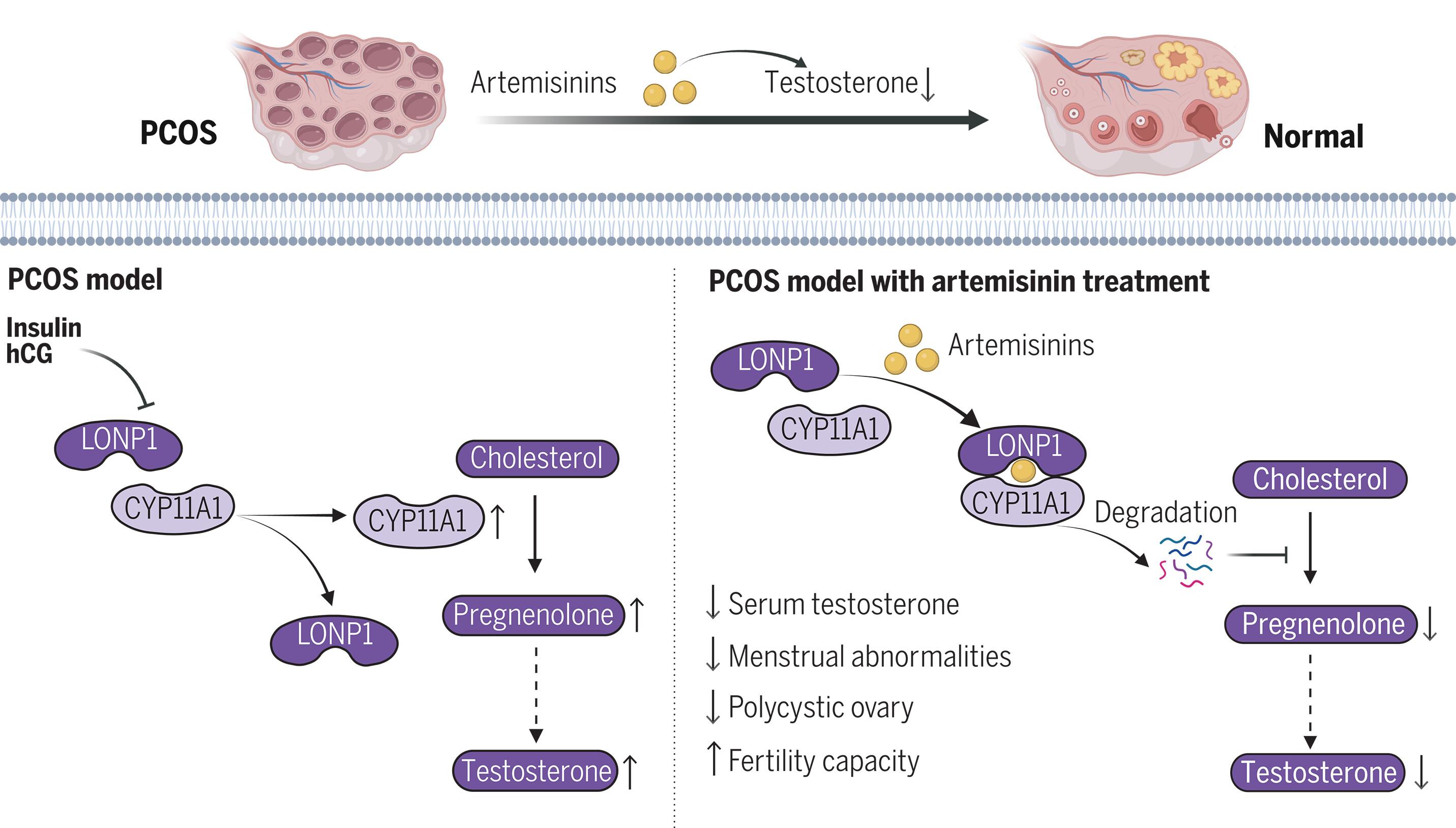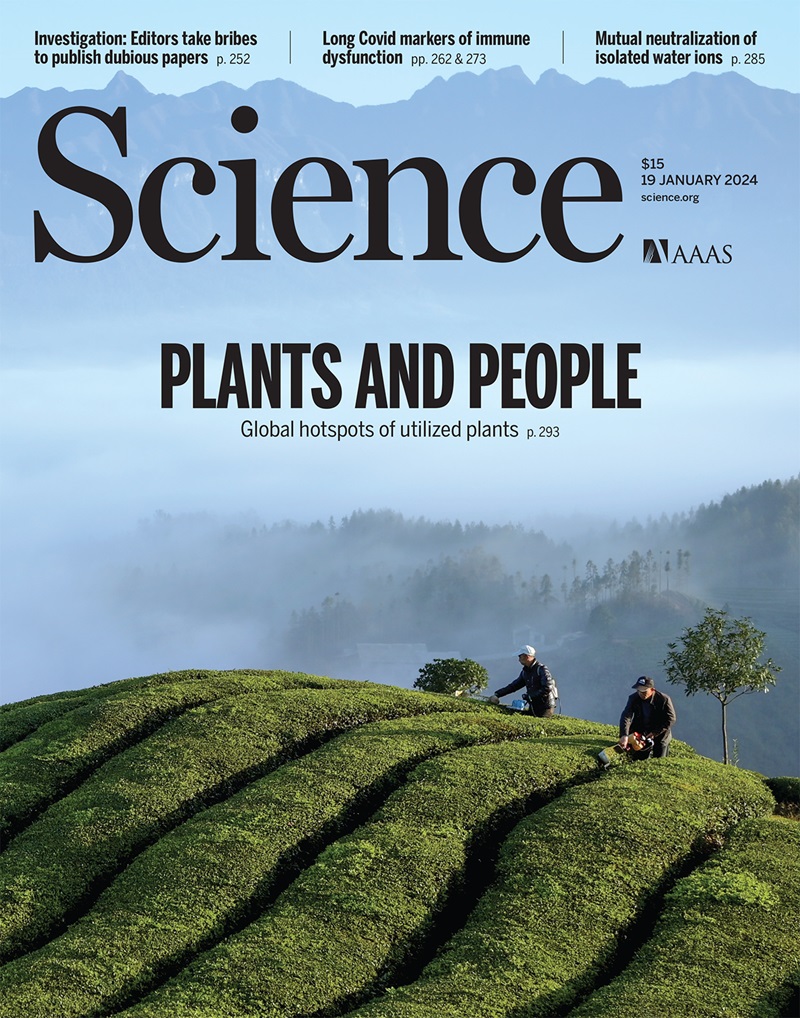Artemisinins ameliorate polycystic ovarian syndrome by mediating LONP1-CYP11A1 interaction
IF 45.8
1区 综合性期刊
Q1 MULTIDISCIPLINARY SCIENCES
引用次数: 0
Abstract
Polycystic ovary syndrome (PCOS), a prevalent reproductive disorder in women of reproductive age, features androgen excess, ovulatory dysfunction, and polycystic ovaries. Despite its high prevalence, specific pharmacologic intervention for PCOS is challenging. In this study, we identified artemisinins as anti-PCOS agents. Our finding demonstrated the efficacy of artemisinin derivatives in alleviating PCOS symptoms in both rodent models and human patients, curbing hyperandrogenemia through suppression of ovarian androgen synthesis. Artemisinins promoted cytochrome P450 family 11 subfamily A member 1 (CYP11A1) protein degradation to block androgen overproduction. Mechanistically, artemisinins directly targeted lon peptidase 1 (LONP1), enhanced LONP1-CYP11A1 interaction, and facilitated LONP1-catalyzed CYP11A1 degradation. Overexpression of LONP1 replicated the androgen-lowering effect of artemisinins. Our data suggest that artemisinin application is a promising approach for treating PCOS and highlight the crucial role of the LONP1-CYP11A1 interaction in controlling hyperandrogenism and PCOS occurrence.

青蒿素通过介导 LONP1-CYP11A1 相互作用改善多囊卵巢综合征
多囊卵巢综合征(PCOS)是育龄妇女普遍存在的一种生殖障碍,其特点是雄激素过多、排卵功能障碍和多囊卵巢。尽管多囊卵巢综合征的发病率很高,但对其进行特异性药物干预却很困难。在这项研究中,我们发现青蒿素类药物是抗多囊卵巢综合征的药物。我们的研究结果表明,青蒿素衍生物能有效缓解啮齿类动物模型和人类患者的多囊卵巢综合征症状,通过抑制卵巢雄激素合成抑制高雄激素血症。青蒿素类药物能促进细胞色素 P450 家族 11 亚家族 A 成员 1 (CYP11A1) 蛋白降解,从而阻止雄激素过度分泌。从机理上讲,青蒿素类药物直接靶向长肽酶1(LONP1),增强了LONP1-CYP11A1的相互作用,并促进了LONP1催化的CYP11A1降解。过表达 LONP1 复制了青蒿素降低雄激素的作用。我们的数据表明,应用青蒿素是治疗多囊卵巢综合征的一种有前景的方法,并强调了LONP1-CYP11A1相互作用在控制高雄激素和多囊卵巢综合征发生中的关键作用。
本文章由计算机程序翻译,如有差异,请以英文原文为准。
求助全文
约1分钟内获得全文
求助全文
来源期刊

Science
综合性期刊-综合性期刊
CiteScore
61.10
自引率
0.90%
发文量
0
审稿时长
2.1 months
期刊介绍:
Science is a leading outlet for scientific news, commentary, and cutting-edge research. Through its print and online incarnations, Science reaches an estimated worldwide readership of more than one million. Science’s authorship is global too, and its articles consistently rank among the world's most cited research.
Science serves as a forum for discussion of important issues related to the advancement of science by publishing material on which a consensus has been reached as well as including the presentation of minority or conflicting points of view. Accordingly, all articles published in Science—including editorials, news and comment, and book reviews—are signed and reflect the individual views of the authors and not official points of view adopted by AAAS or the institutions with which the authors are affiliated.
Science seeks to publish those papers that are most influential in their fields or across fields and that will significantly advance scientific understanding. Selected papers should present novel and broadly important data, syntheses, or concepts. They should merit recognition by the wider scientific community and general public provided by publication in Science, beyond that provided by specialty journals. Science welcomes submissions from all fields of science and from any source. The editors are committed to the prompt evaluation and publication of submitted papers while upholding high standards that support reproducibility of published research. Science is published weekly; selected papers are published online ahead of print.
 求助内容:
求助内容: 应助结果提醒方式:
应助结果提醒方式:


